Related Research Articles

Theodore William Richards was the first American scientist to receive the Nobel Prize in Chemistry, earning the award "in recognition of his exact determinations of the atomic weights of a large number of the chemical elements."

The Perkin Medal is an award given annually by the Society of Chemical Industry to a scientist residing in America for an "innovation in applied chemistry resulting in outstanding commercial development." It is considered the highest honor given in the US chemical industry.
The Society of Chemical Industry (SCI) is a learned society set up in 1881 "to further the application of chemistry and related sciences for the public benefit".
Warren Kendall Lewis was an MIT professor who has been called the father of modern chemical engineering. He co-authored an early major textbook on the subject which essentially introduced the concept of unit operations. He also co-developed the Houdry process under contract to The Standard Oil Company of New Jersey into modern fluid catalytic cracking with Edwin R. Gilliland, another MIT professor.

William Henry Perkin Jr., FRS FRSE was an English organic chemist who was primarily known for his groundbreaking research work on the degradation of naturally occurring organic compounds.
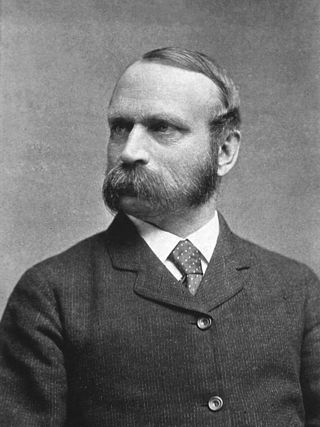
Charles Frederick Chandler was an American chemist, best known for his regulatory work in public health, sanitation, and consumer safety in New York City, as well as his work in chemical education—first at Union College and then, for the majority of his career, at Columbia University, where he taught in the Chemical Department, the College of Physicians and Surgeons, and served as the first Dean of Columbia University's School of Mines.
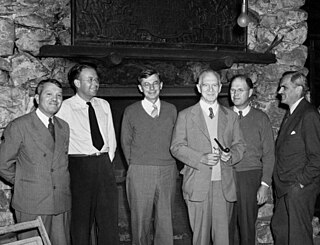
Eger Vaughan Murphree was an American chemist, best known for his co-invention of the process of fluid catalytic cracking.
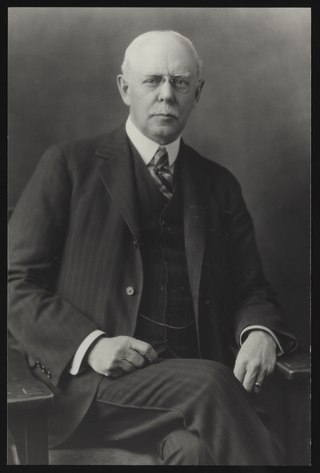
Arthur Dehon Little was an American chemist and chemical engineer. He founded the consulting company Arthur D. Little and was instrumental in developing chemical engineering at the Massachusetts Institute of Technology (MIT). He is credited with introducing the term unit operations to chemical engineering and promoting the concept of industrial research.
Arthur Waldorf Thomas was a professor and chemist who specialized in colloid chemistry. He studied and taught at Columbia University for 50 years.
Charles Frederick Burgess was an American chemist and engineer. He was founder of the University of Wisconsin-Madison department of Chemical Engineering in 1905, and was a pioneer in the development of electrochemical engineering in the United States. In 1917 he founded the Burgess Battery Company.

Martin Hill Ittner was a chemist working for Colgate, now known as Colgate-Palmolive. He is best known for his contributions to applied chemistry, including the development of toothpaste and detergent.
Dr. Carl Frederick Prutton was an American chemist, chemical engineer, inventor, industrial executive, philanthropist and educator. Prutton held more than a hundred patents on lubricants and chemical processes known in the chemical industry as "the Prutton patents". Prutton was the head of the department of chemistry and chemical engineering at the Case Institute of Technology, a director of research and a vice president at Olin Mathieson Chemical Corporation, an executive vice president of the Food Machinery and Chemical Corporation, and a member of the National Academy of Engineering. He received several notable awards and distinctions including the Perkin Medal of the Society of Chemical Industry, the Modern Pioneer Award of the National Association of Manufacturers, an honorary Doctor of Science degree from Manhattan College.
Harry Linn Fisher was the 69th national president of the American Chemical Society, and an authority on the chemistry of vulcanization. Fisher was the author of four popular books on the chemistry and technology of rubber, and the holder of 50 patents.
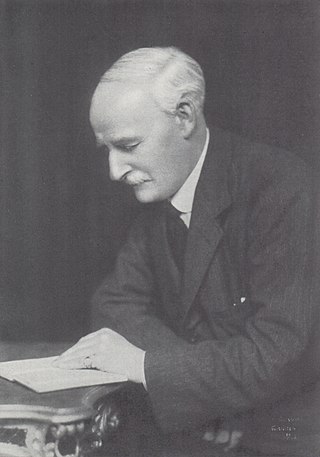
Arthur Smithells, CMG FRS was a British chemist.
The Society of Chemical Industry (America Section) or SCI America is an independent learned society inspired by the creation of the Society of Chemical Industry (SCI) in London in 1881. Originally known as the New York Section, it was formed in 1894 and officially renamed the America Section in 1919. The main activity of the America Section is the awarding of several prizes in chemistry: the Perkin Medal, the Chemical Industry Medal and the Gordon E. Moore Medal. The America Section also works with the American Chemical Society (ACS) and others to support scholars in chemistry and chemical engineering.
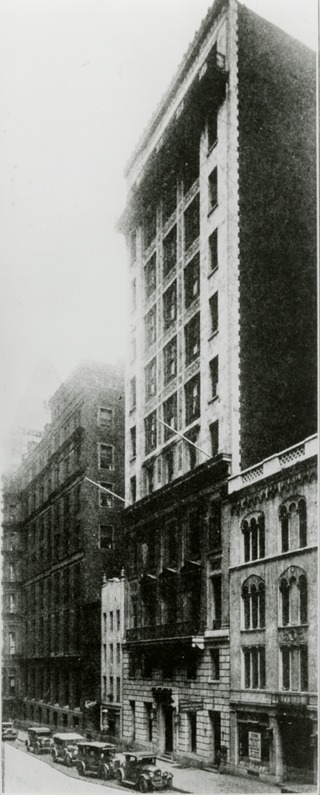
The Chemists' Club is a private club in New York whose membership is open to research and industrial chemists from all areas. The Chemists' Club filed for incorporation on December 9, 1898. The Club's goal was "to promote the interests of chemists and those interested in the science and applications of chemistry", by providing academics and industrial chemists with space to meet, work, and study. It provided a place for members of various chemical societies to meet and mingle, including the American Chemical Society, the Society of Chemical Industry, the Verein Deutscher Chemiker, the American Electrochemical Society and the American Institute of Chemical Engineers (AIChE).
Albert Fredrick Ottomar Germann was an American physical chemist, university professor, and chemical entrepreneur.

James Gayley was an American chemist and steel metallurgist who served as managing director of the Carnegie Steel Company, and as the first vice president of U.S. Steel from 1901 to 1908. He is credited with many inventions which greatly improved the fields of steel and iron making. For his contributions in the field of metallurgy, he was awarded the Elliott Cresson Medal in 1909, and the Perkin Medal in 1913.
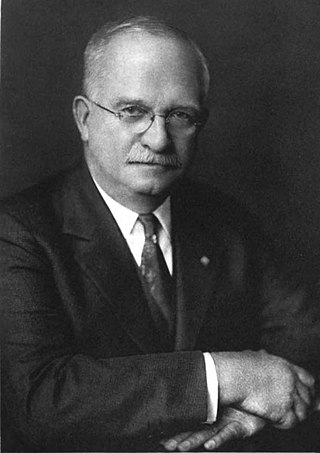
Charles Lathrop Parsons was an American chemist. He was a professor at the University of New Hampshire for twenty years, and then a chemist and mineralogist at the U.S. Bureau of Mines. For nearly forty years, Parsons served as executive secretary of the American Chemical Society, becoming known as "Mr. ACS" and substantially influencing the formation of the association.
References
- ↑ Little, Arthur D. (1923). "Milton C. Whitaker". Industrial & Engineering Chemistry. 15 (2): 196–198. doi:10.1021/ie50158a038.
- ↑ "General catalogue of the officers and graduates of the University of Colorado, 1877-1910". Boulder, Col., The Boulder Publishing Company. 1911.
- ↑ "AccessGenealogy - Free Genealogy - United States Genealogy". 19 February 2015.
- ↑ "Honorary Degrees, University Medals and Distinguished Service Awards Full List A-Z". Archived from the original on 2021-01-16.
- ↑ Annual Catalog University of Pittsburgh Year Ending June, 1915. 1915. p. 542. Retrieved September 2, 2015.
- ↑ "Board of Directors from 1912 to Present". Archived from the original on 2009-02-08.
- ↑ Whitaker, M. C. (1941). "Perkins Medal - The Work of the Medalist". Industrial & Engineering Chemistry. 33 (3): 361–365. doi:10.1021/ie50375a016.
- ↑ "Web Page Under Construction". Archived from the original on 2011-07-07. Retrieved 2010-02-03.
- ↑ "OVER ORGANIZATION a FLAW IN INDUSTRY; Dr. Milton C. Whitaker, Chemist, Accepts Perkin Medal, High Scientific Honor". The New York Times. 14 January 1923.